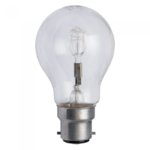Moth
Well-Known Member
My plants are doing well, I'm collecting the suckers and practicing colour curing in a box and thinking about a kiln. Finding an old fridge and gutting it fine, although, unsure how to control the temp and humidity.
Can you please read my understanding below and let me know if I'm wrong, or missing anything?
1) crock pot (slow cooker) and 'stat.
- Simplest and cheap (£9 slow cooker, £10 stc1000 controller)
- Requires daily top ups and "trial and error" humidity calibration (how much of the lid is open)
2) heat lamp, atomiser and dual stat
- Simple and cheap (£8 heat lamp, £11 sht2000 dual relay temp and humidity controller, £6 atomiser)
- not sure if happy with the heat lamp in a box, although could sub with a £20 oil filled bar heater for greenhouses)
-atomiser and hard water don't play well (I have very hard water)
3) arduino controller instead of an stc1000/shc2000 and parts from either #1 or #2
- most complex (I already own a few and the only investment is time, coding isn't a problem)
- can add additional data logging (although, in real terms a min/max temp and humidity would be fine)
- can automate a vent fan if either temp or humidity exceeds a cutoff
I've read a number of threads about kilns, although, there's frustratingly little information about non crock pot kilns / dual temp and humidity controllers etc
Any thoughts / pitfalls about my understanding of the possible build options?
Can you please read my understanding below and let me know if I'm wrong, or missing anything?
1) crock pot (slow cooker) and 'stat.
- Simplest and cheap (£9 slow cooker, £10 stc1000 controller)
- Requires daily top ups and "trial and error" humidity calibration (how much of the lid is open)
2) heat lamp, atomiser and dual stat
- Simple and cheap (£8 heat lamp, £11 sht2000 dual relay temp and humidity controller, £6 atomiser)
- not sure if happy with the heat lamp in a box, although could sub with a £20 oil filled bar heater for greenhouses)
-atomiser and hard water don't play well (I have very hard water)
3) arduino controller instead of an stc1000/shc2000 and parts from either #1 or #2
- most complex (I already own a few and the only investment is time, coding isn't a problem)
- can add additional data logging (although, in real terms a min/max temp and humidity would be fine)
- can automate a vent fan if either temp or humidity exceeds a cutoff
I've read a number of threads about kilns, although, there's frustratingly little information about non crock pot kilns / dual temp and humidity controllers etc
Any thoughts / pitfalls about my understanding of the possible build options?


